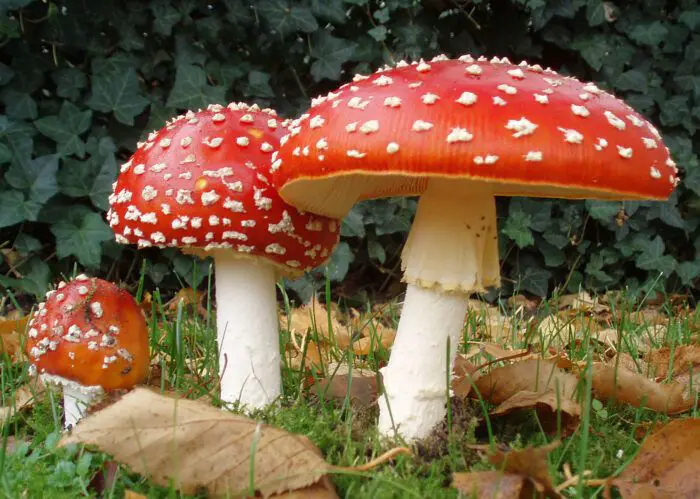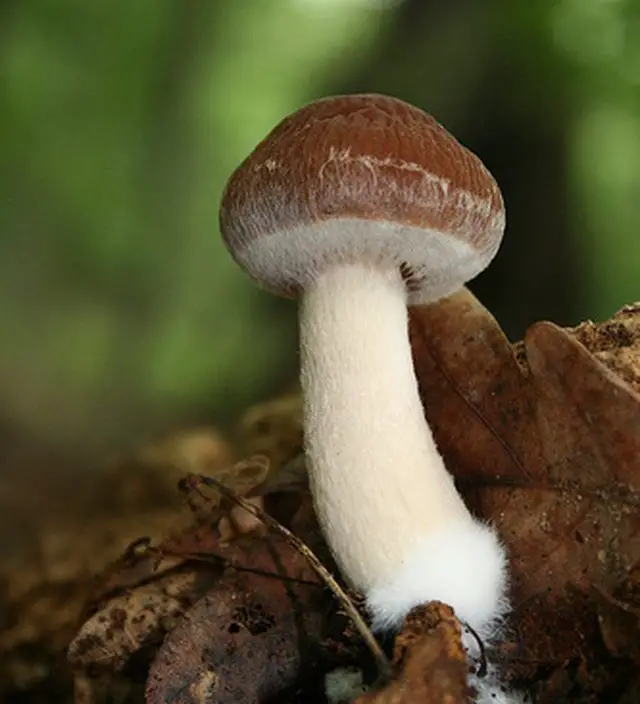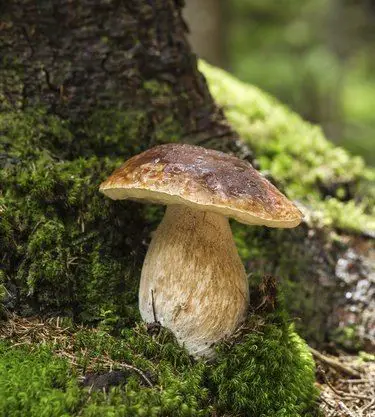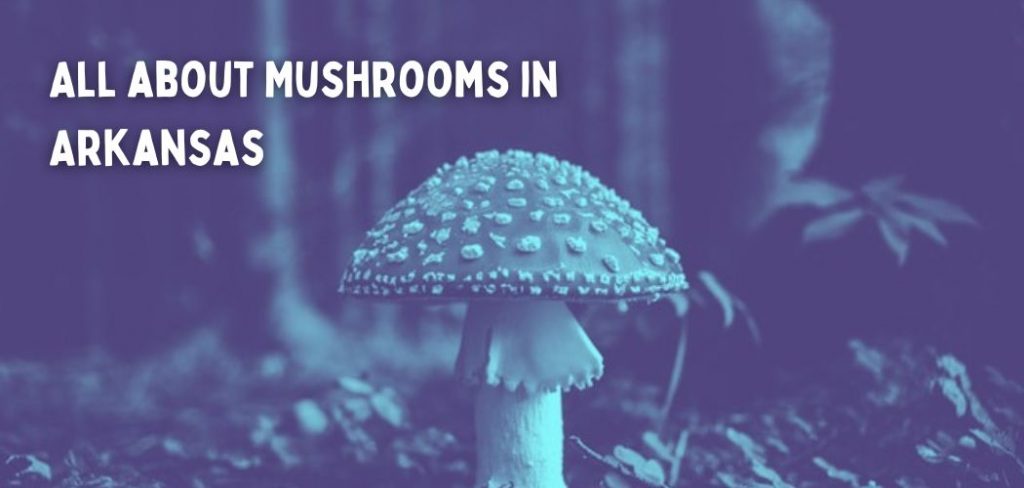Before we dig deeper into “All about mushrooms in Arkansas” let’s have some information about mushrooms.
A Mushroom is the fleshy, spore-bearing fruiting body of a fungus, typically produced above ground, on soil, or it’s a food source.
Are mushrooms healthy for you?
You can’t go wrong with mushrooms. They are fat-free, low sodium, low calorie, and cholesterol free.

Mushrooms are used worldwide to add flavors to lots of different cultures’ cuisines.
Mushrooms can either be poisonous or edible.
Arkansas mushrooms and fungi
Are Arkansas mushrooms fungi or fungus?
In Arkansas, there are many fungus-like organisms besides “real fungi,” which are members of the kingdom of Fungi.
So “real fungi” are things like mushrooms, yeasts (like the yeast that ferment the grape juice into wine and the yeast that helps produce beer), sugar molds, etc.
Other “fungus-like material” officially known as fungus-like protists includes organisms known as
- mildew
- slime molds.
Let’s find out about poisonous and edible mushrooms in Arkansas.
Are there any poisonous mushrooms in Arkansas?
Yes, Arkansas has poisonous mushrooms. Before you hunt, it’s important to know the difference between good, edible and poisonous mushrooms.
If possible, take an expert with you.
Common types of poisonous mushrooms in Arkansas
- Galerina Marginata (Funeral bell or deadly skull cap)
Galerina Marginata is a poisonous mushroom that contains enough Alpha- amanitin to cause death.
Ingesting toxic amounts of this mushroom can lead to severe unease, cramps and diarrhea, and later kidney and liver damage.
- Psilocybe Cubensis (shrooms, magic mushrooms, golden halos, cubes, or gold caps)
These mushrooms are wild or cultivated, that contain psilocybin (a hallucinogenic chemical).
Why are they called magic mushrooms?
Psilocybin is a hallucinogenic chemical that can cause you to see, hear and feel sensations that seem real but are not.
- Cortinarius rubellus (Deadly webcap)
Cortinarius rubellus looks like something from a fairy tale, but the deadly webcap mushroom is a killer.
Deadly webcaps contain a poison called orellanine.
The poison induces kidney failure eventually after ingesting it.
- Rubroboletus Satanas
Rubroboletus Satanas, because of its poisonous nature is commonly referred to as
- Devil’s Bolete
- Satan’s Bolete
Muscarine (in tiny quantities) has been found in this mushroom.
People who ingest it might show symptoms of diarrhea, stomach pains, and sickness.
- Omphalotus Illudens (Jack O’Lantern Mushroom)
Omphalotus Illudens is a large, orange mushroom.
This mushroom is easy to identify, but it’s often confused with an edible mushroom known as Chanterelles.
- Clitocybe Deadlbata (Ivory Funnel)
Clitocybe dealbata, also known as the ivory funnel, is a small white funnel-shaped mushroom.
The main toxic component of Clitocybe dealbata is muscarinic.
The symptoms are like those of nerve agent poisoning, like
- Increased salivation
- Sweating (perspiration)
- Tear flow (activation)
Within 15- 30 minutes of ingestion.
- Gyromitra Esculenta (brain mushroom, elephant ears, or beefsteak mushroom/morel)
Gyromitra esculenta is a member of a group of fungi known as “false morels”.
Its top resembles a brain or walnut.
The principal poisonous ingredient is gyromitrin.
The onset of signs and symptoms of toxicity usually occurs 5 to 12 hours after ingestion adhering to the 6-hour rule.
The most common presenting complaints are abdominal pain and nausea.
- Hygrophoropsis Aurantiaca
Hygrophoropsis aurantiaca is commonly known as the false chanterelle.
According to research its edibility varies–it is poisonous but has historically been eaten internationally.

Amongst other toxins, it contains high levels of sugar alcohol arabitol.
Edible Mushrooms in Arkansas
There are many edible mushrooms found in Arkansas.
- Hen of the woods (Grifola frondosa, Maitake)
These mushrooms are most commonly found in the fall but they can be found less frequently in summers.
These mushrooms have a rich flavor and are delicious when added to stir-fries, sautees, grain dishes, and soups.
Nutrition of Hen of the woods mushrooms
They are quite nutritious and particularly high in
- Vitamin B folate
- Niacin (B3)
- Riboflavin (B2)
- Oyster Mushrooms
Oyster mushrooms resemble oysters in shape and are commonly sought after by mushroom hunters.
Oyster mushrooms can be used as a side dish sauteed with onions and garlic. They can also be added to soups and pasta.
Nutrition of oyster mushrooms
Oyster mushrooms have
- Vitamin B
- Niacin B3 and Riboflavin B2
- Potassium
- Copper
- Iron
- Zinc
- Puffball Mushrooms
Puffball mushrooms are commonly found in meadows and fields usually in late summer and Autumn.
Mature puffballs can be eaten either raw or cooked.
Some fatally poisonous mushrooms look a lot like puffballs when they are young.
Nutrition of Puffball mushrooms
They are rich in protein and low in calories and also very fulfilling.
Also, contain
- Phosphorus
- Manganese
- Selenium
- Clavacin
- Morels
Morels are mostly found in woodlands or woody edges.
Morels are not supposed to be eaten raw or consumed in large amounts because they have mild toxic chemicals which are destroyed in cooking.
Nutrition of Morels
The Morel contains:
- Potassium
- Vitamins
- Copper
which are all healthy for the heart.
- Bolete Mushrooms
Boletes are summer treats. They grow under trees or on the ground close to trees. Pine trees are their favorite.

Some members of this species are poisonous.
Boletes can be hard to digest, so cook them thoroughly and should not be eaten raw.
Nutrition of bolete mushrooms
They are an excellent source of protein and are an excellent source of both dietary fiber and iron.
- Chanterelles
Chanterelle mushrooms are the most well-known edible mushroom.
They are great in soups, stews, and sauces and pair well with many wines, food, and herbs.
Nutrition of Chanterelles
Chanterelles have health-boosting polysaccharides, fatty acids, and beta-glucans that act as gut prebiotics.
These mushrooms are also rich in several vitamins and minerals.
- Black trumpet mushrooms
Black trumpet mushrooms are commonly called black chanterelles.
You will find them in the same habitat as true chanterelles.
They have a similar taste to golden chanterelles but they are smokey.
Mushroom hunting in Arkansas

While many wild mushrooms are highly nutritious, delicious, and safe to eat, other mushrooms pose a serious risk to your health.
For this reason, it’s important to hunt mushrooms only with experts.
Best Season To Hunt In Arkansas
Fall is the best time to hunt because the hot summer days have finally subsided, the nights are a little cooler, and there is more moisture.
You’ll love hunting mushrooms in Arkansas!
